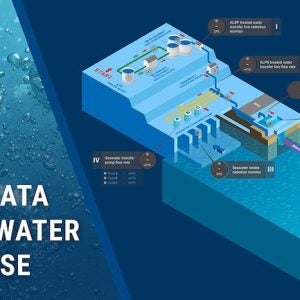The UK’s recently established Nuclear Decommissioning Authority (NDA) has published its approved strategy setting out how to tackle the decommissioning and cleanup of its historic nuclear installations, including its 20 civil nuclear sites.
The strategy, which was subject to a three-month public consultation last year, sets out key principles, including accelerated decommissioning wherever feasible and a schedule to create a strong competitive market that aims to achieve value-for-money for the taxpayer. However, the document also identifies significant increases in the estimated total costs for decommissioning the UK’s nuclear legacy, now conservatively estimated at close to £70 billion ($120 billion).
NDA chairman, Sir Anthony Cleaver, said: “The costs of decommissioning and cleanup are already substantial and, if other countries’ experiences are a guide, estimated costs will almost certainly rise further in the short term.”
The 2005 lifecycle baseline (LCBL) shows that the current estimated undiscounted cost of decommissioning, cleanup and commercial operations by the NDA is £62.7 billion ($107 billion). However, there are other costs, which will be included in the 2006 LCBL, including R&D directly funded by the NDA, the cost of new low-level waste (LLW) disposal facilities and potential costs for the long-term management of contaminated land. Including these items adds £7.5 billion ($12.9 billion) to the cost of decommissioning and cleanup and there are a number of exclusions even from this, including costs associated with the long-term management arrangements for intermediate-level waste (ILW) and the treatment and disposition of plutonium and uranic materials, should they be reclassified as waste.
Cleaver said: “Within these overall totals are the cost of our income generating commercial operations at £14 billion ($24 billion) and the cost of decommissioning and cleanup at £56 billion ($96 billion). However, there are a range of factors, some of which are the subject of government policy reviews which will require further assessment.” The full costs of cleanup are to be established by 2008.
The strategy sets out a decades-long strategy but includes six key priorities for the next five years, including:
- Creating robust, costed and funded plans to clean up sites based on a comprehensive understanding of the liabilities.
- Demonstrating real progress in reducing high hazards in legacy ponds and silos, especially at Sellafield.
- Completing competitions for managing and operating most sites.
- Determining a better approach to ILW interim storage and LLW disposal.
- Accelerating the decommissioning timescales for Magnox and other reactor sites.
- Reviewing site end states and agreed decommissioning timescales for all sites.
Competition for the management and operation of NDA sites aims to encourage innovation, improve contractor performance and deliver best value to taxpayers. Cleaver added: “Our priorities for the coming year are to launch our first competition – the contract to manage and operate the low-level waste facility at Drigg.” By April 2007, the NDA intends to issue a new Sellafield contract as part of the sale of British Nuclear Group (BNG) that will give the new owners the opportunity to continue to run the contract for managing and operating the Sellafield site until 2012.
Other priorities are to ensure that the remaining quantities of liquid high-level waste (HLW) are vitrified, and to evaluate the options for rationalising ILW interim storage and the continued use of the LLW repository near Drigg to meet short-term needs.
Within 25 years, the NDA aims to achieve final site clearance at Culham, Harwell, Winfrith and Springfields and accelerate decommissioning at both Dounreay and the Magnox reactors to achieve site clearance within 25 years, subject to government approving a convincing business case.
Within 75 years, the NDA hopes to have decommissioned the plants and facilities at Sellafield in Cumbria with the higher-hazard legacy ponds and silos at Sellafield and Dounreay the top decommissioning priority. The NDA will also review the future of Thorp and monitor the performance of the Sellafield MOX Plant against its production targets.
The NDA was set up by the UK government last April to provide the first ever UK-wide strategic focus on decommissioning and cleaning up nuclear sites with a current budget of over £2 billion ($3.4 billion) a year. It aims to spend at least £1 billion ($1.7 billion) of this annual budget on hazard reduction, decommissioning and cleanup, with most of the remainder on operations. Revenue from operations, which goes directly to the Treasury, was forecast at around £1 billion per year.
Related ArticlesIter management unit proposed






